CCSS.MATH.CONTENT.4.NF.A.2
Compare two fractions with different numerators and different denominators, e.g., by creating common denominators or numerators, or by comparing to a benchmark fraction such as 1/2. Recognize that comparisons are valid only when the two fractions refer to the same whole. Record the results of comparisons with symbols >, =, or <, and justify the conclusions, e.g., by using a visual fraction model.
- Free Plan
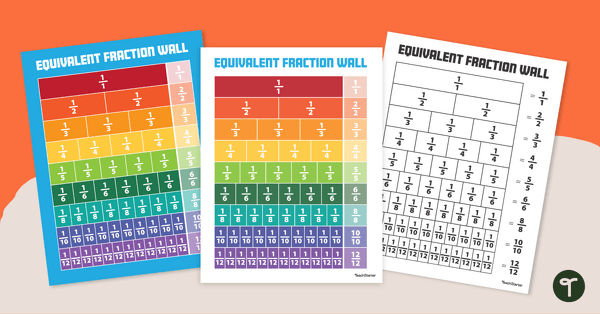
Equivalent Fraction Wall - Poster
Guide students to develop an understanding of fractions with the same value by using an equivalent fractions chart in your classroom.
- Free Plan
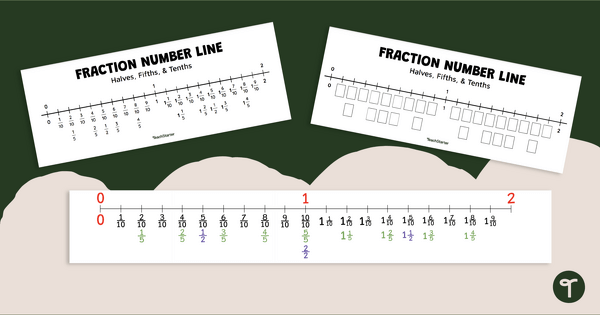
Fractions on a Number Line - Halves, Fifths, and Tenths
Demonstrate the concept of fractions on a number line with a printable fraction number line display and student reference sheets.
- Plus Plan
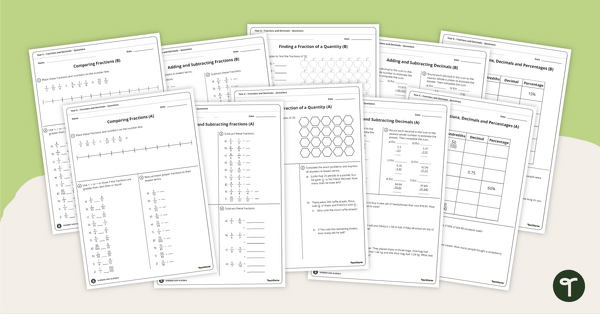
Fractions, Decimals and Percentages Worksheets
Use these fractions, decimals and percentages worksheets in your upper elementary classroom for independent practice or as an assessment activity.
- Plus Plan
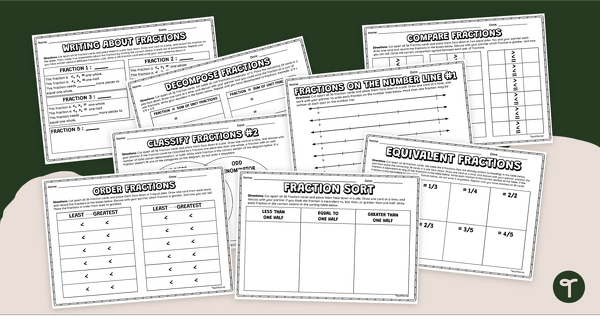
Fraction Partner Tasks - 4th Grade Fractions
Encourage mathematical collaboration and discussion with a group of thirteen 4th-grade fractions partner activities.
- Plus Plan
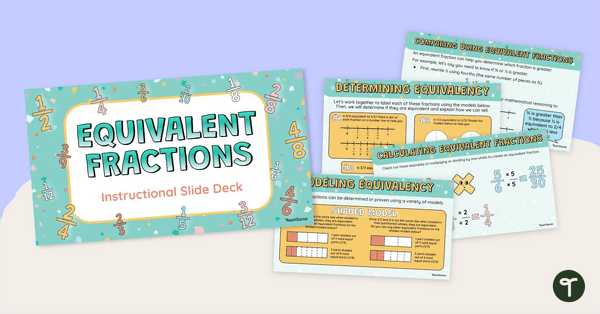
Equivalent Fractions – Instructional Slide Deck
Teach your students how to find equivalent fractions by using a number line, shaded models, or a fraction chart with this instructional slide deck.
- Plus Plan
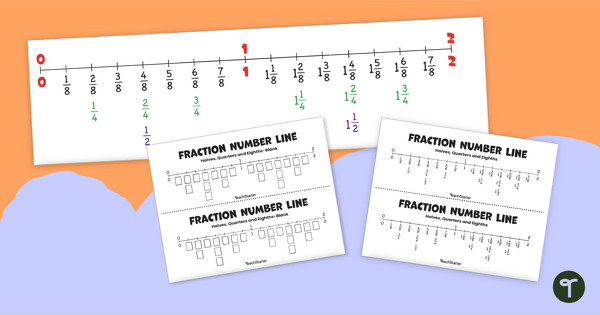
Fractions on a Number Line - Halves, Quarters, and Eighths
Demonstrate the concept of fractions on a number line with a printable number line display and student reference sheets.
- Free Plan
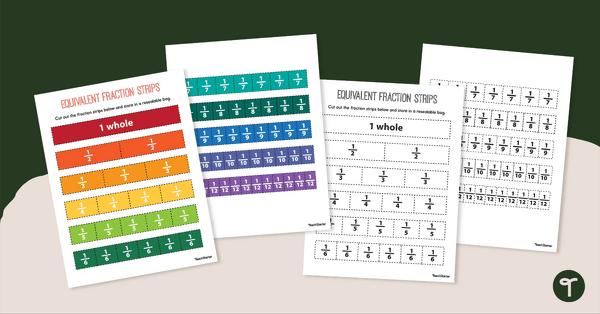
Fraction Strips
Promote hands-on learning in your classroom with this set of printable fraction strips.
- Free Plan
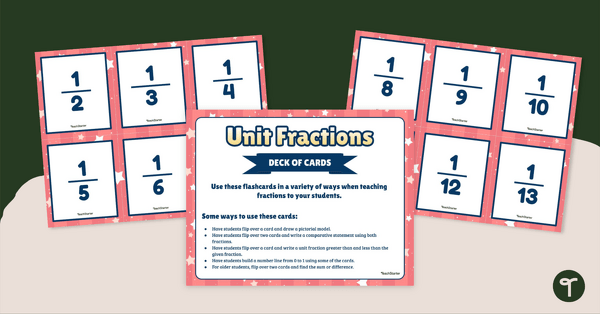
Unit Fractions – Deck of Cards
Use this deck of 30 cards to practice different concepts with unit fractions.
- Plus Plan
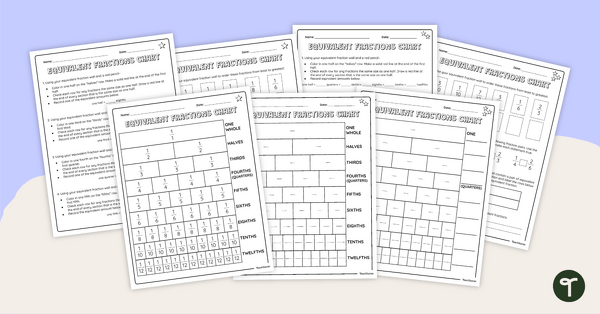
Equivalent Fractions Chart – Differentiated Worksheets
Use a fraction wall to find equivalent fractions and compare fractions with this set of differentiated worksheets.
- Plus Plan
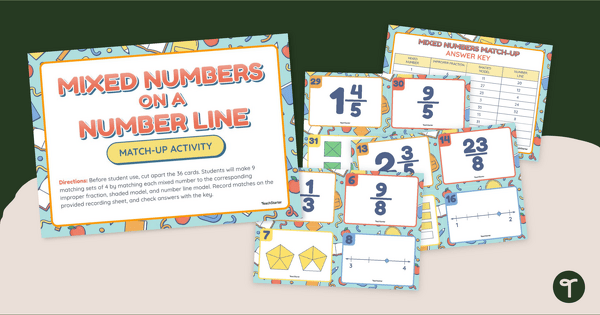
Mixed Numbers - Fraction Model Match-Up
Practice matching improper fractions, mixed numbers, bar models, and fraction number lines with this set of 36 match-up cards.
- Plus Plan
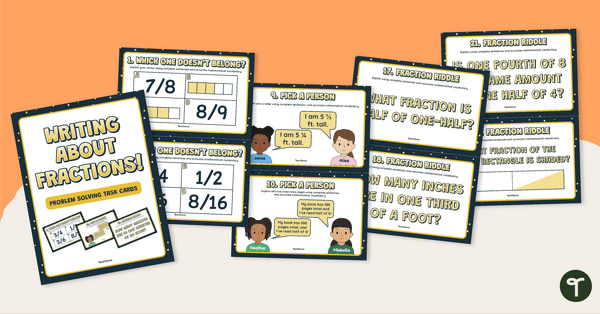
Writing About Fractions- Task Cards
Review fraction concepts and practice mathematical constructed response questions with a set of writing about fractions task cards.
- Plus Plan
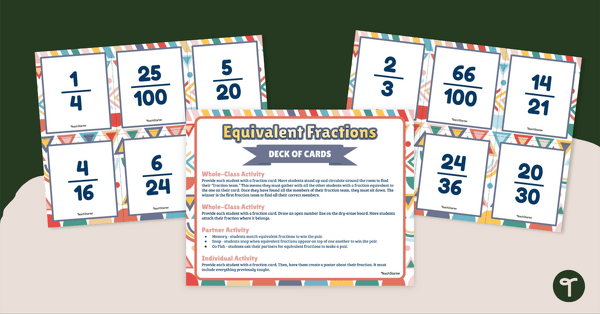
Equivalent Fractions – Deck of Cards
Encourage healthy competition between your students by using this set of 30 equivalent fraction cards to play a variety of math games.
- Plus Plan
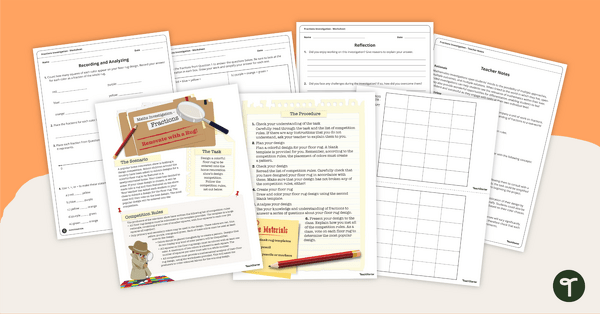
Math Investigation - Operations with Fractions with Common Denominators
A mathematics investigation about fractions, embedded in a real-world context.
- Plus Plan
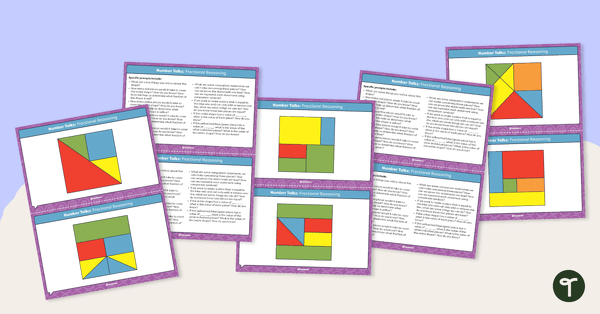
Number Talks - Fractional Reasoning Task Cards
Build fractional reasoning skills with this set of 16 task cards.
- Free Plan
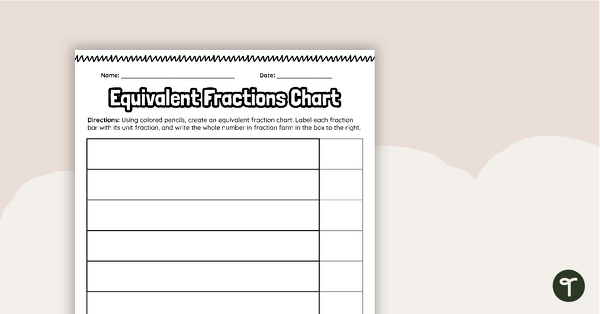
Equivalent Fractions Chart - Blank
Encourage students to create their own equivalent fraction chart with this printable math template.
- Plus Plan
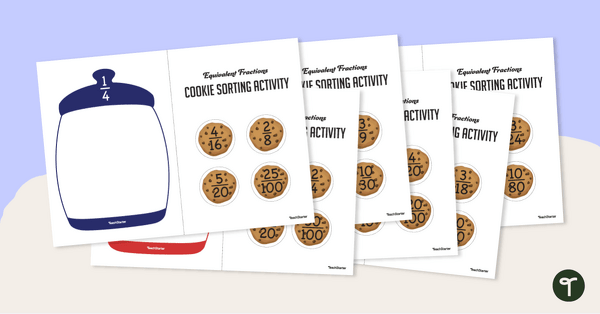
Equivalent Fractions - Cookie Jar Sorting Activity
Review equivalent fractions with this whole-class sorting activity that gets students moving and simplifying!
- Plus Plan

Grade 4 Daily Warm-Up – PowerPoint 1
A 70-slide PowerPoint presentation containing a variety of quick warm-up activities.
- Plus Plan
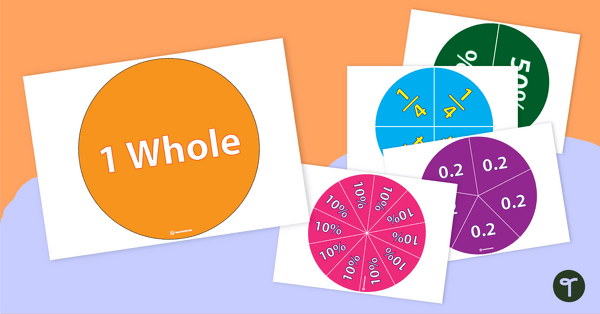
Fraction, Percentage and Decimal Circles
A set of fraction, decimal, and percentage circles to use with your students when teaching equivalency.
- Plus Plan
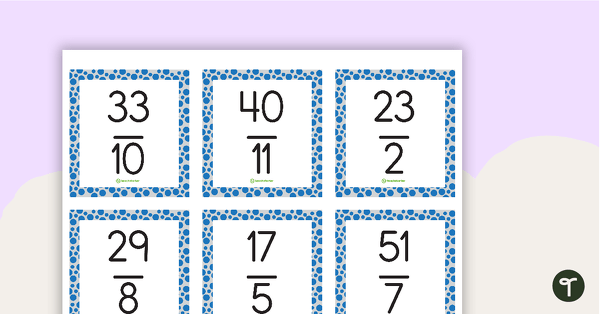
Improper Fractions Cards
A set of 30 cards displaying various improper fractions.
- Plus Plan
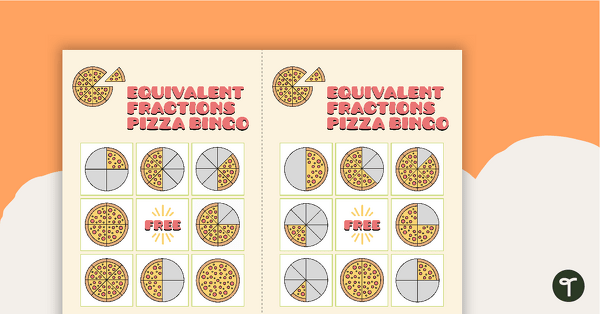
Equivalent Fractions Pizza Bingo - Whole, 1/2, 1/4, 1/8
32 different bingo cards to practice finding equivalent fractions involving 1, 1/2, 1/4, and 1/8.
- Plus Plan
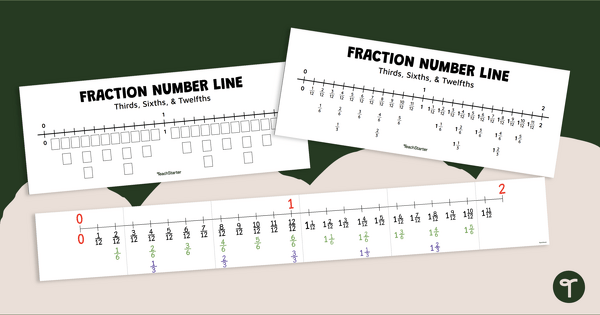
Fractions Number Line - Thirds, Sixths, and Twelfths
Demonstrate the concept of thirds, sixths, and twelfths on a number line with a printable number line display and student reference sheets.
- Plus Plan
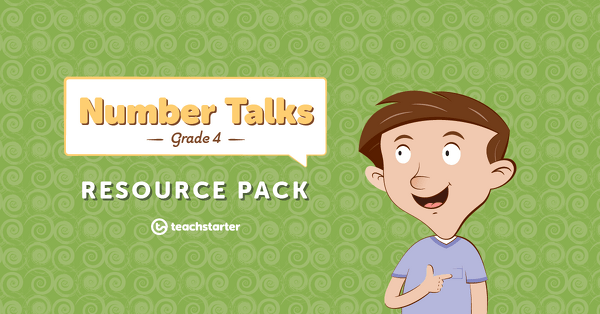
Number Talks Teaching Resource Pack - Grade 4
A collection of number talks teaching resources that support meaningful and highly engaging conversations in the mathematics classroom.
- Plus Plan
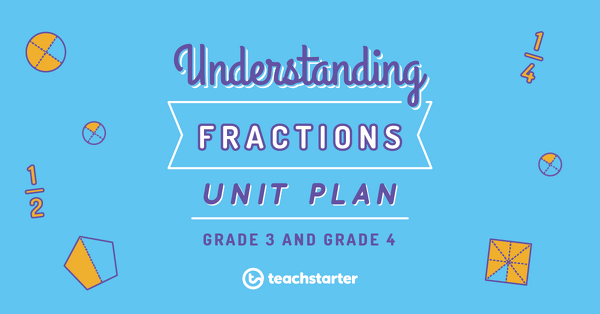
Understanding Fractions - Grade 3 and Grade 4
This Mathematics unit covers a range of concepts relating to fractions.
- Plus Plan
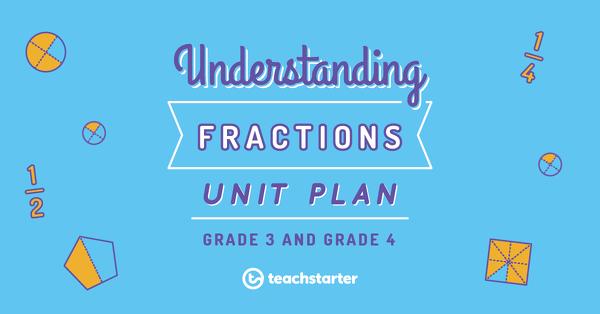
Understanding Fractions Assessment - Grade 3 and Grade 4
A 60 minute assessment designed to assess student learning.
- Plus Plan
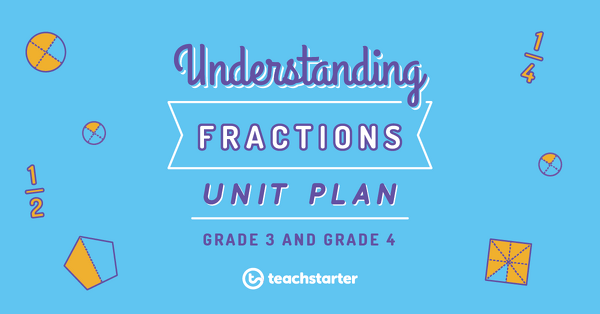
Fractions Investigation - Renovate with a Rug (3)
A 60 minute lesson in which students will apply knowledge and understanding of fractions to a real-world context.
- Plus Plan

Fractions Investigation - Renovate with a Rug (2)
A 60 minute lesson in which students will apply knowledge and understanding of fractions to a real-world context.
- Plus Plan
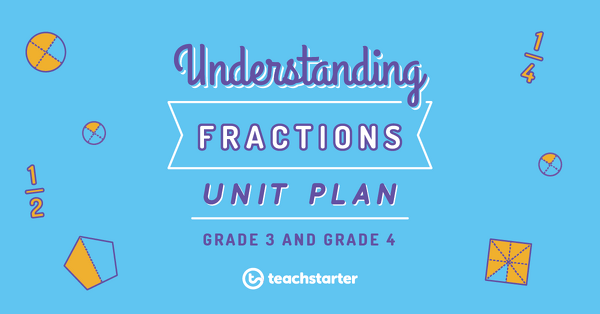
Fractions Investigation - Renovate with a Rug (1)
A 60 minute lesson in which students will apply knowledge and understanding of fractions to a real-world context.